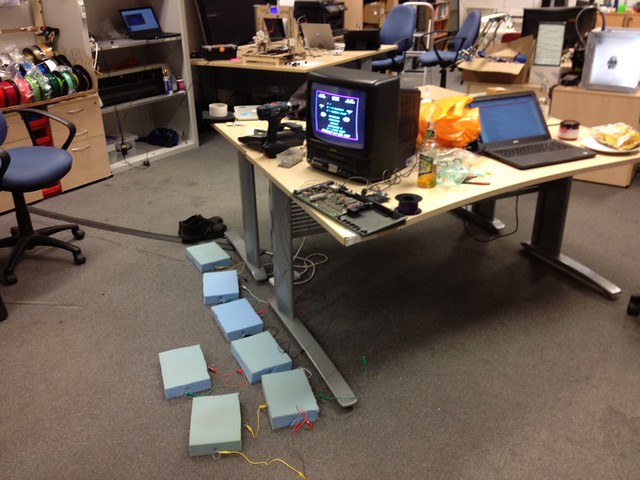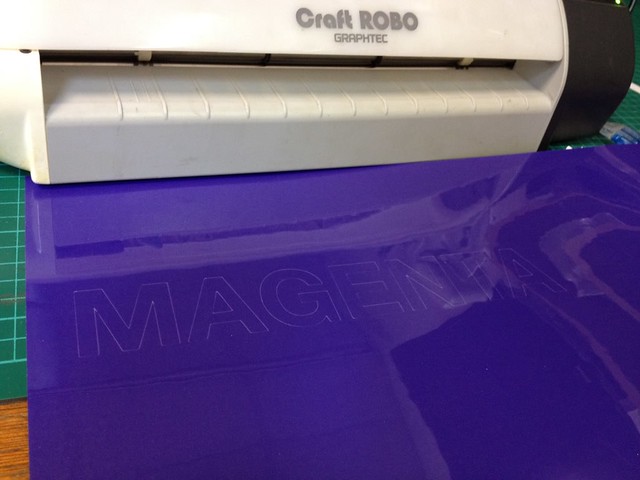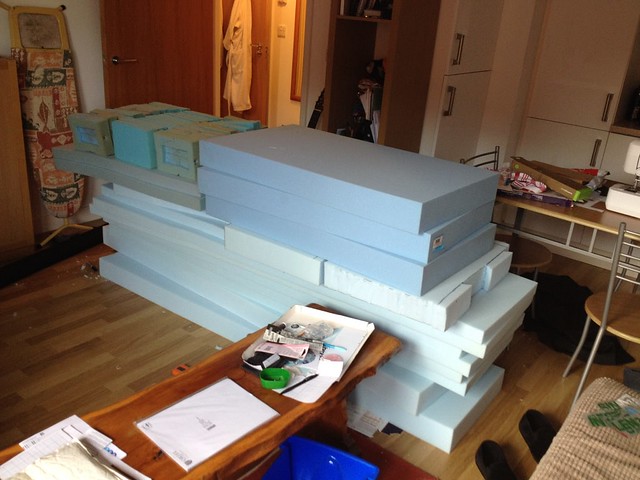Speczilla
At last summer's SHA hacker camp in the Netherlands, I gave a presentation showing how to create a ZX Spectrum chiptune in one hour - specifically a rendition of the Archers theme tune, by request of the Oxford Hackspace contingent there. The presentation went down very well (and not just with the British visitors who had actually heard of The Archers, I'm happy to report), but the on-stage visuals attracted some attention too...
I have never seen a Sinclair Spectrum this large! pic.twitter.com/eN4jSR2Wcn
— Jenny List (@Jenny_Alto) August 5, 2017
I hope they built a scaled dead flesh keyboard so it could be used as a bouncy castle.
— Carl Pickering (@CarlPickering) August 5, 2017
On any other occasion, this would have elicited a few chuckles before we all moved on. But this was a hacker camp, a place where you're immersed in laser beams, music, robots, light shows and the feeling that anything is possible. Hell, why couldn't we build a bouncy castle version of ZX Spectrum? Particularly as next year's hacker camp would be the UK's own EMFCamp, where a giant Spectrum would surely be particularly well received...
The more I think about this, the more I legit want "functioning giant ZX Spectrum" to happen at next EMFcamp. @OxfordHackspace let's do this
— Matt Westcott (@gasmanic) August 6, 2017
You know we give grants out to fund installations right.
— Jonty Wareing (@jonty) August 7, 2017
Right. That sounds like something we can't ignore! :)
— Jenny List (@Jenny_Alto) August 7, 2017
A brief survey of the YouTube results for "how to make a bouncy castle" revealed that there was no real prior art in hobbyist bouncy castle construction - clearly a shocking lapse on the part of the hacker community. Instead, I hatched a plan to get a base layer made by a custom inflatables company, and build a cover to go over the top containing the pressure-sensing layer. This way, I'd be able to work on the electronic bits independently, and also neatly sidestep the inflatables company having to work with anything identifiably Spectrum-ish and raising the wrath of the IP paperwork gods. (Usually the "ask forgiveness not permission" route wouldn't be my style, but the prospect of asking permission, getting a no and having to can the whole project would have been too disappointing to contemplate...)
The inflatable didn't happen in the end, for a variety of logistical, timeline and cost issues, and so plan B was deployed: building it out of foam as a "soft play" affair. By that point most of the parameters for the project had been settled on: it would be a 17-times scale model, giving suitably foot-sized keys and making the final dimensions four by two-and-a-half metres. The key switches used a very simple mechanism: two wires stretched at right angles inside a hollowed-out block of foam, which made contact when compressed:
These would be wired together in a 5x8 matrix, matching the layout of a real Spectrum's keyboard membrane. Originally I'd hoped to hook it up to the keyboard connectors of a real Spectrum motherboard, but early tests didn't bode well: for reasons that are no doubt obvious to people with more analogue electronics expertise than me, Spectrums don't like their data buses stretched out over the span of several metres, and a whole lot of crashing ensued.

Reluctantly I switched to a Raspberry Pi running the Fuse Spectrum emulator, aided immensely by PJ Evans's comprehensive article in The MagPi issue 67 on putting a Pi Zero inside a Spectrum case.
The great thing about hackspaces is the wealth of expertise you can tap into, and people's generosity in introducing you to skills that were previously outside your comfort zone - and there was certainly plenty of that on this project. I never realised just how much maths is involved in creating sewing patterns, not to mention stuff that ought to be maths but is actually just magic. (Hands up who knows the formula for calculating the length of fabric to go around the circumference of an ellipse... lol just kidding there isn't one.) Lauren and Hugo from Oxford Hackspace graciously stepped in to assist with sewing the keys into their three-dimensional form, as did my Mum and Dad who very kindly came down for a couple of weekends as the EMFcamp deadline loomed, to set me back on track and remind me to get enough sleep.
Meanwhile, Tony at Reading Hackspace provided invaluable advice on the lettering - I was expecting to have to spend countless messy hours with stencils and fabric paint until he introduced me to the wonders of heat transfer vinyl, where to get it, and crucially, picking out the specific variety that would co-operate with the polyester beanbag fabric I'd settled on. Recreating those keywords and block graphics in 150-point Helvetica glory was a real labour of love.

The final piece of the puzzle was the small matter of transporting it 60 miles to a field in the Cotswolds. The foam requirements had rather spiralled out of control - I essentially bought up my local Dunelm store's entire stock for July, so I can only apologise to anyone in Oxford who was planning to get some upholstering done this summer. Jenny (who remained an enthusiastic supporter of the project having accidentally kicked the whole thing off all those months ago) sent out an appeal for drivers, and Phil from Milton Keynes Maker Space came to the rescue. In theory it should have fit comfortably into his Mercedes E-class estate, but I don't think either of us knew what we were letting ourselves in for...

Admittedly, it didn't help that I was still way behind schedule on the build, and had to bring my sewing machine and assorted raw materials along for the ride. Thanks to Phil's impressive Tetris skills, we just barely crammed it all in. Equal kudos goes to Peter from Oxhack, who ferried over one of the hackspace's huge plasma TVs. (I thankfully realised at the planning stage that a typical office projector wouldn't be up to the task of producing a visible picture outdoors on a summer day.)
And after that epic metaphorical and literal journey, did we get it up and running?
Yes.
Ish.
Played a game of Jet Set Willy on @gasmanic's giant soft Spectrum keyboard by stepping on the keys! #EMFCamp pic.twitter.com/Z25a5et0lz
— Jodi (@squirmelia) September 2, 2018
While the keyboard mechanism worked fine in laboratory conditions, in the wild it was heavily dependent on the tension of the wires being just right - and getting 40 of them to behave at the same time was like a circus plate-spinning act. It held up for just long enough for a few games of Batty and Jet Set Willy, and for much of the time I had it running Ate Bit's 1kdj, a musical toy that wasn't so reliant on lightning-fast reflexes.
Up until the event itself I hadn't decided whether the giant Spectrum would live on after EMF - if indeed it survived in one piece - but in the end that question has been answered for me. There's unfinished business here: along with needing to fix the keyboard problem (currently Velostat is looking like a promising solution), I ran out of time to add the back panel with the Sinclair logo, and the iconic Spectrum stripe. I also have some thoughts about how to make it not need so much damned foam. EMF will be back in 2020, and surely two years is plenty of time to get these final details ironed out without the deadline suddenly creeping up on me, right...?